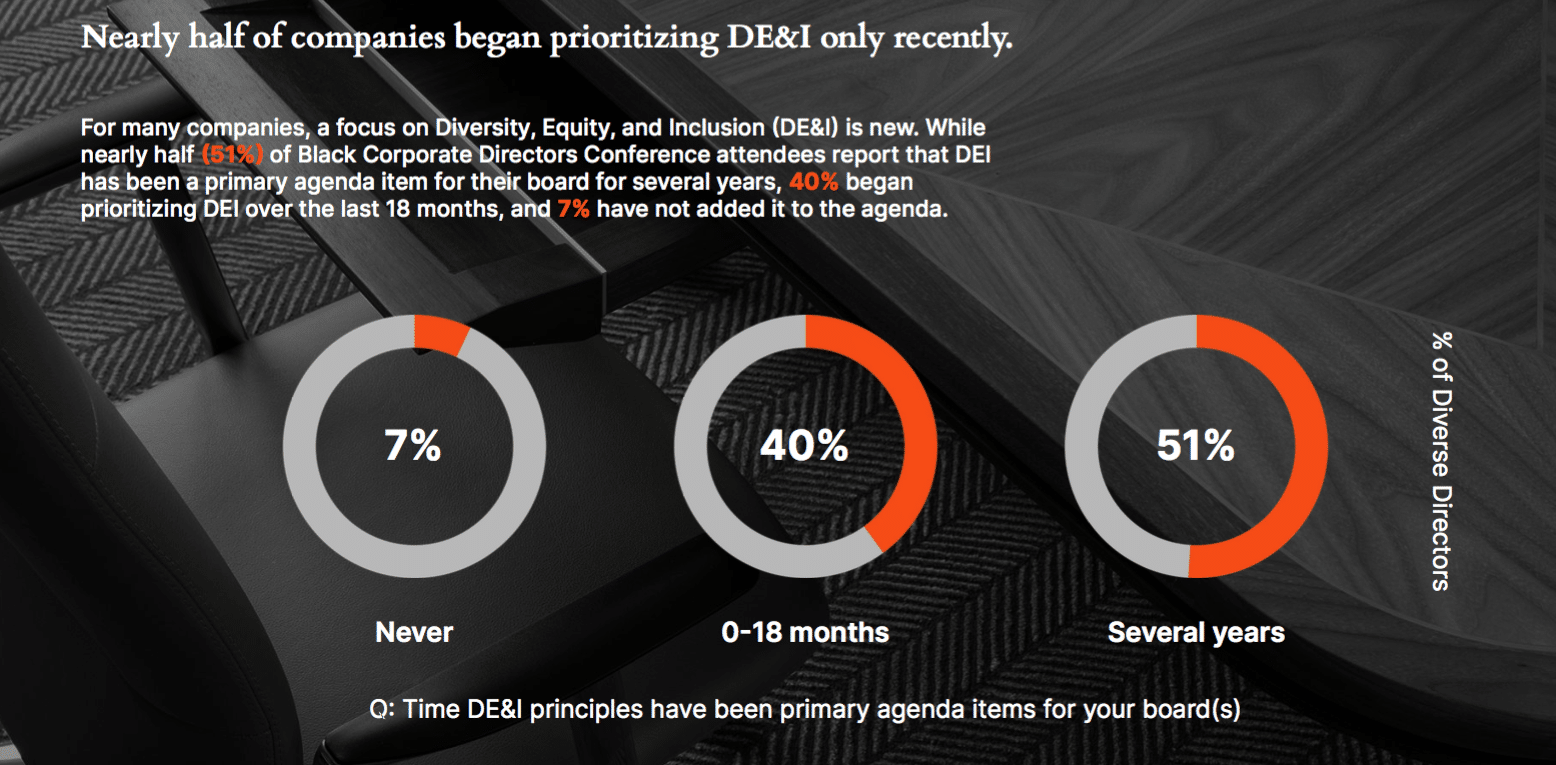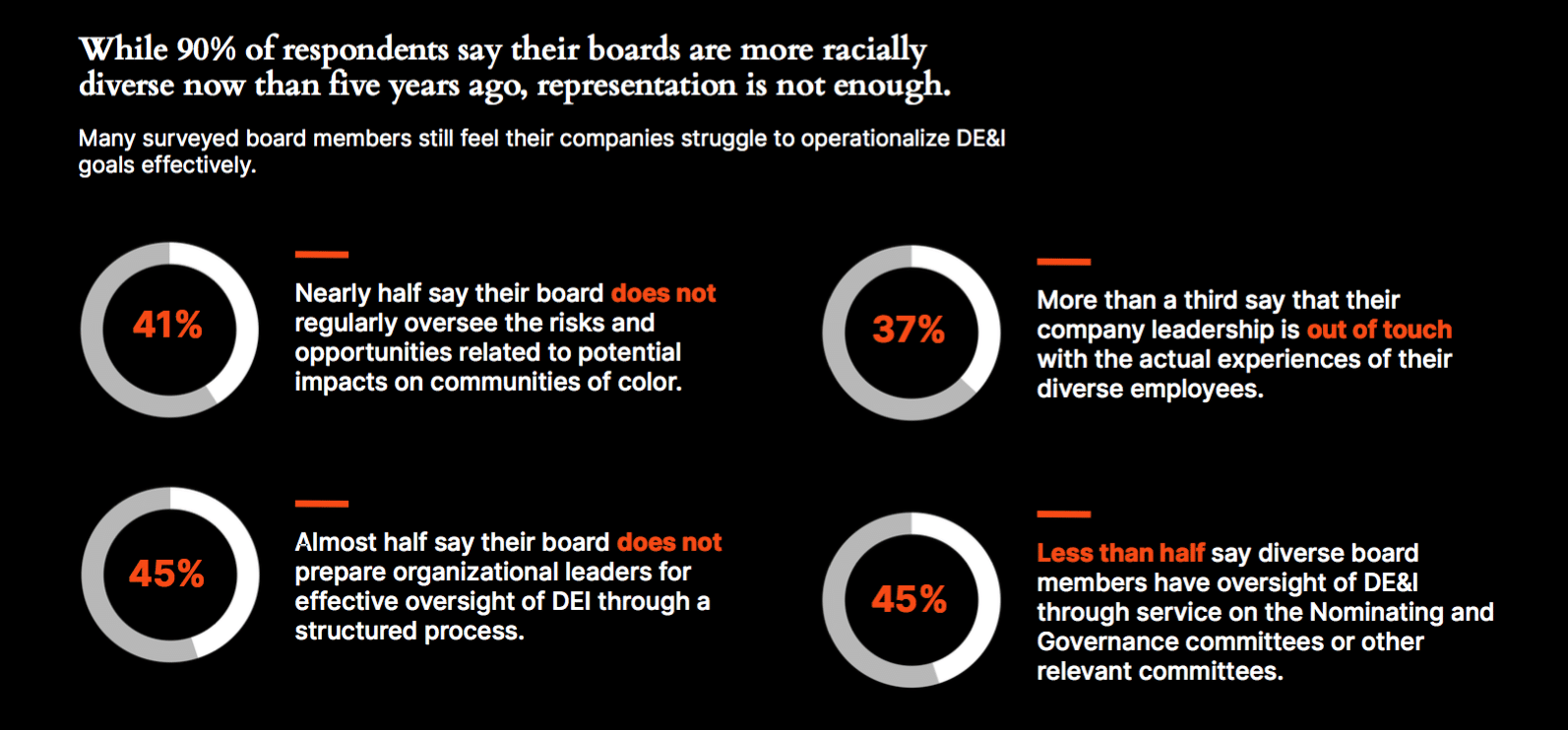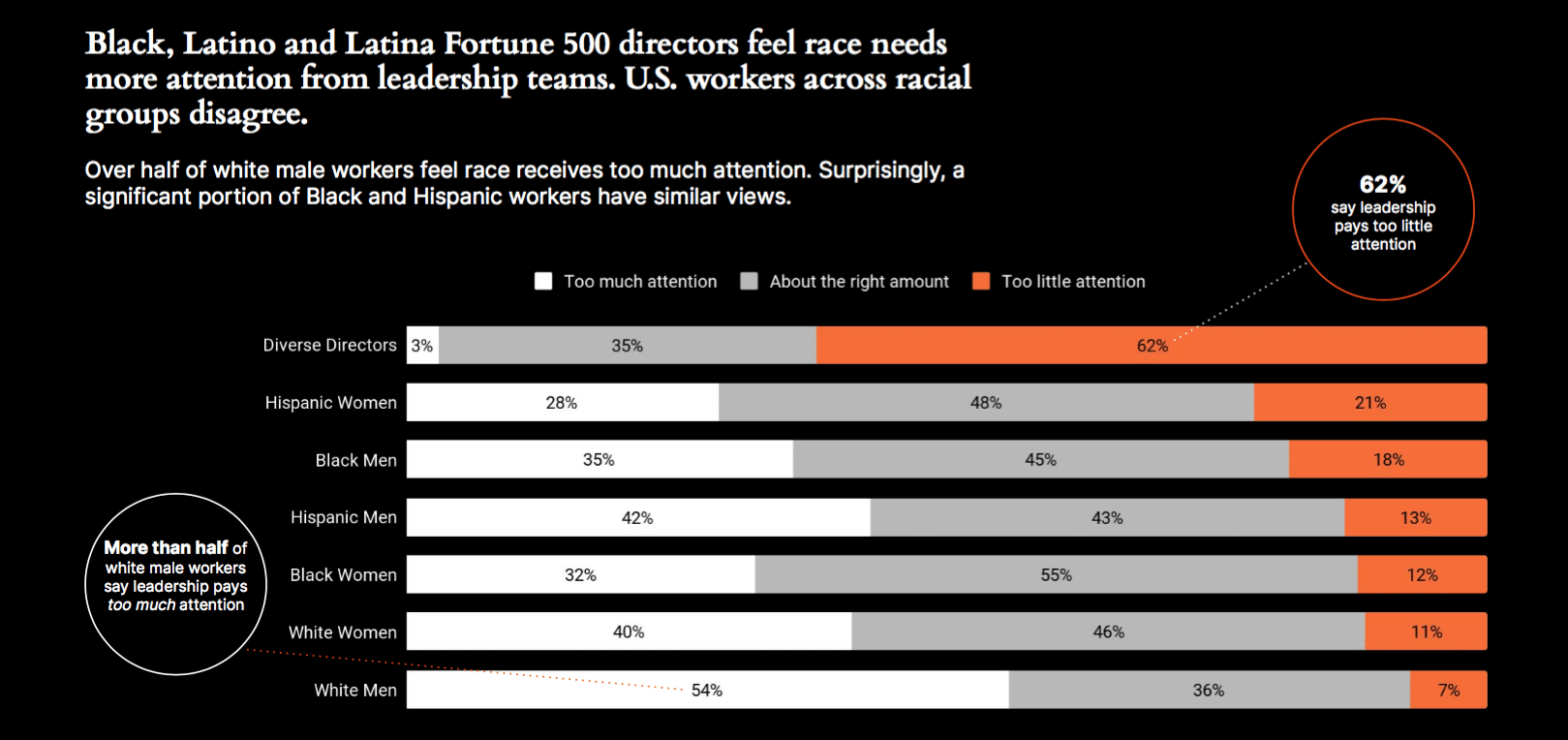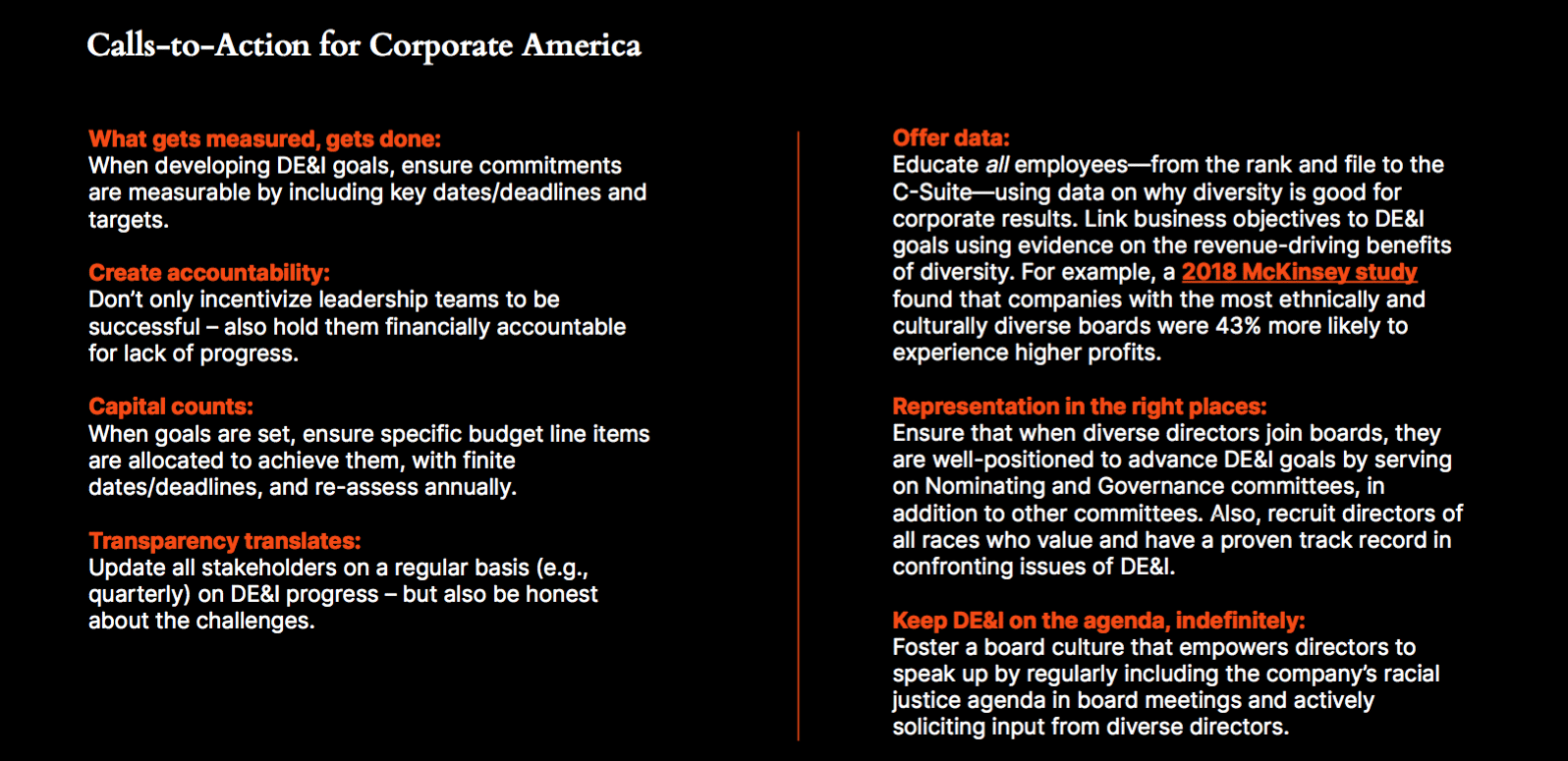Corporate America has made demonstrable progress on diverse board representation. Yet, a new study from asset management firm Ariel Investments shows the world’s largest companies still have room to grow on effectively operationalizing diversity, equity and inclusion (DE&I) goals and driving measurable results.
Recently lauded ISS data shows that non-white directors now occupy ~50 percent more board seats at companies in the Russell 3000 stock index than in 2019. Ariel co-founded the Black Corporate Directors Conference in 2002 with Russell Reynolds. Twenty years later, the annual event brings Black, Latino and Latina Fortune 500 directors together to share best practices and commit to promoting the civil rights agenda within their respective boardrooms.
In September 2021, Ariel commissioned a study of 151 Black, Latino and Latina Fortune 500 corporate directors who virtually attended the conference. Responses were fielded by Ariel’s data partner, Momentive (formerly SurveyMonkey). Ariel and Momentive also polled a sample of 4,958 U.S. workers nationally, across races, for direct comparison to the corporate director group.
While 90 percent of directors surveyed say their boards are more racially diverse now than five years ago, several obstacles are holding back progress throughout all levels of corporations.
DE&I is a newer agenda item for many boards, added over the past 18 months following the murder of George Floyd. In a few cases, it is still not at the top of the list
- 40 percent of respondents say their boards recently added DE&I as a primary agenda item over the last 18 months, while 7 percent have still not added it to the agenda.
- The good news: when DE&I isa primary agenda item, resources are allocated to support those goals. For companies where DE&I is prioritized, 82 percent of directors say their companies invest capital to support these initiatives, and 71 percent feel there is sufficient capital committed.
Many respondents feel there is inadequate board oversight of DE&I issues. Also, diverse directors are not well-positioned to drive change
- Nearly half (41 percent) of diverse directors say their boards do not regularly oversee risks related to potential impacts on communities of color.
- There is also evidence that business leaders need better training to implement programs. Almost half (45 percent) of respondents say their boards do not prepare organizational leaders for effective oversight of DE&I.
- There remains an opportunity to better position diverse directors to drive change. Less than half of respondents (45 percent) say diverse directors on their boards have oversight of DE&I through Nominating and Governance committees, or other relevant committees.
There is an education gap between the board and average employees on how DE&I contributes to business outcomes
- Most diverse directors believe companies act on DE&I issues out of interest in the experience of diverse employees (66 percent), concern for social inequality (59 percent), and the interests of shareholders (59 percent)—suggesting that directors believe DE&I is critical to a company’s success.
- However, employees do not trust that corporations are prioritizing DE&I for business or social reasons. 62 percent of U.S. workers believe companies act for public relations reasons or political concerns.
- This mismatch could be attributed to a lack of information sharing and a disconnect between employees and leaders: 37 percent of directors think their companies’ leadership teams are out of touch with the actual experiences of their diverse employees.
Without an adequate understanding of the purpose DE&I initiatives serve, U.S. workers say leadership teams pay too much attention to race
- Diverse directors overwhelmingly (62 percent) feel race receives too littleattention from company leadership teams.
- However, U.S. workers disagree. More than half of white male workers (54%) and nearly half of white women (40 percent) say their leadership team pays too muchattention to race.
- Surprisingly, a significant portion of Black (35 percent of men, 32 percent of women) and Hispanic (42 percent of men, 28 percent of women) workers feel the same way.
Calls-to-action for Corporate America
Ariel Investments remains steadfast in the following calls-to-action for boards and leadership, titled: the Three Ps: People, Purchasing and Philanthropy. In light of the inaugural Black Corporate Directors Study, Ariel Investments recommends additional tactics for directors and management teams aiming to meaningfully advance their DE&I objectives at all levels of their companies:












